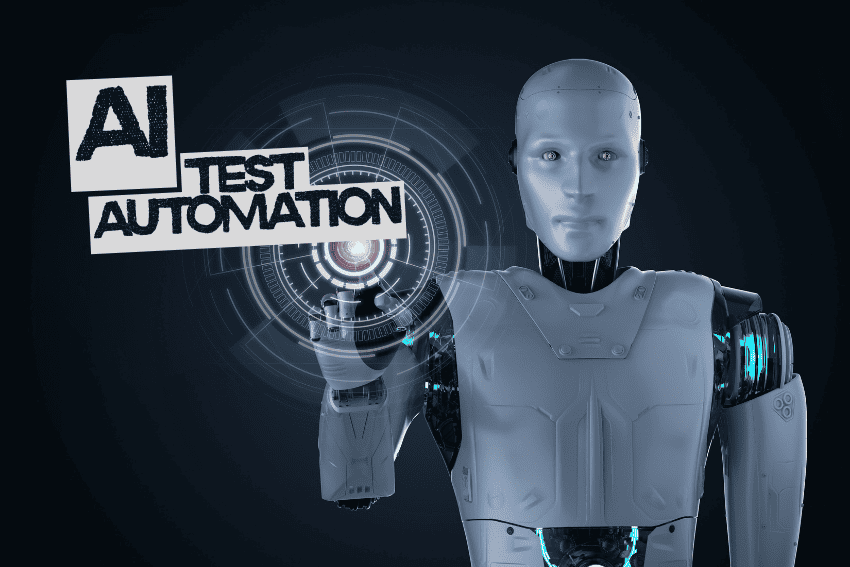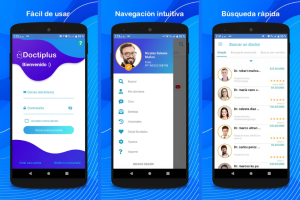Software bugs cost the U.S. economy a staggering billion dollars annually. This expensive reality highlights why AI test automation is becoming essential for modern software development.
When you implement AI testing tools, you gain a clear advantage in speed and efficiency. These tools can analyze entire codebases, generate test cases, and run tests faster than any manual testers, making it too difficult to match. AI can automatically create realistic test data. This eliminates the need for manual data creation and expands your testing scenarios. The system learns from historical data and execution patterns to prevent bugs before they affect your users.
Throughout this article, you’ll discover how AI is transforming software testing automation, the key benefits of AI-driven testing approaches, and practical applications that can improve your testing processes. You’ll also learn about the challenges of implementing AI in testing and understand the evolving relationship between human testers and AI systems.
Understanding AI Test Automation

AI test automation represents a transformation in how quality assurance works. Enterprises are integrating AI-augmented testing tools into their software development lifecycle, leading to a significant jump.
Machine Learning vs Rule-Based Automation
The AI testing tools can be divided into two distinct approaches: rule-based systems and machine learning systems.
Rule-based automation relies on predefined scripts and explicit “if-then-else” statements coded by humans. These systems capture the knowledge of human experts and embed it within the testing framework. Rule-based approaches give several advantages:
- Accuracy and precision: They operate within strictly defined parameters
- Speed and efficiency: With proper configuration, they make decisions quickly
- Ease of use: They require minimal data to perform repetitive processes
Machine learning systems create their own models through data pattern analysis. Their algorithms help applications predict outcomes without explicit programming. These systems excel at finding patterns in large datasets. Testing teams can analyze code modifications and adjust test cases intelligently. The systems adapt to changing applications, which reduces false positives and keeps tests stable.
Natural Language Processing in Test Case Design
Natural Language Processing (NLP) represents a powerful branch of AI that enables computers to understand and work with human language. Here, testers can write test cases in plain English without any coding knowledge. For instance, tools implementing NLP in test automation allow complex test creation with minimal training, making automation accessible to non-technical team members.
NLP transforms test automation through several key capabilities:
- Requirement analysis: NLP algorithms can analyze natural language inputs like user stories or requirements documents to generate test cases automatically
- Test data generation: NLP creates realistic test data from text descriptions, which enables detailed scenarios that closely resemble real-world use cases
- Error analysis: NLP can understand logs and error messages, categorize mistakes, identify root causes, and suggest solutions
How AI Differs from Traditional Automation
Traditional automation testing relies on predefined scripts created by engineers using tools like Selenium. These scripts interact with application elements predictably but need updates whenever the UI changes.
In essence, the differences between traditional and AI-driven testing include:
AI-driven testing mimics human intelligence through machine learning algorithms. It performs traditional automation functions with greater adaptability. Traditional tools cannot adjust to evolving business workflows. AI recognizes changing requirements and test scenarios.
AI testing introduces self-healing capabilities. With traditional frameworks, even small UI changes can break entire test suites in traditional frameworks. AI-powered testing detects these changes and adjusts selectors automatically. This prevents tests from breaking due to superficial changes.
AI expands test coverage extensively. Traditional scripts follow predefined paths and miss edge cases often. AI generates test flows dynamically by analyzing usage data and identifying risk areas. Industry data also shows that AI-driven testing cuts execution time.
LambdaTest is an AI testing tool transforming test automation by integrating AI into every stage of the quality assurance process. With features like auto-healing tests, AI-powered test script generation, and smart test orchestration, teams can dramatically reduce the time spent on test creation and maintenance.
The platform supports parallel testing across 3,000+ browsers, devices, and operating systems, allowing faster feedback loops and wider coverage. Whether you’re using Selenium, Cypress, Playwright, or others, LambdaTest’s cloud infrastructure makes scaling automation effortless and reliable.
What sets LambdaTest apart is its AI automation intelligence that proactively identifies flaky tests, predicts failures, and offers actionable insights through visual dashboards and root cause analysis.
Combined with seamless integration into CI/CD pipelines and support for real device cloud testing, LambdaTest empowers DevOps, QA, and development teams to deliver robust digital experiences with speed and confidence. It’s not just test automation, it’s intelligent, scalable, and future-ready testing.
Key Benefits of AI-Driven Testing
The practical advantages of incorporating AI in test automation extend far beyond basic efficiency improvements. Organizations implementing AI testing tools report dramatic gains in testing effectiveness across multiple dimensions.
Self-Healing Scripts for UI Changes
One of the most important features of AI-powered testing is its self-healing automation. We are aware that the traditional test scripts frequently break when developers make even minor UI adjustments. Ultimately, creating a huge maintenance burden.
Self-healing mechanisms help AI to detect element changes automatically. Test scripts are adjusted without any human intervention. This capability reduces the time spent fixing broken tests and allows the QA teams to focus on strategic testing instead of maintenance.
Faster Test Execution with Predictive Models
AI substantially accelerates testing cycles through intelligent test selection and prioritization. Rather than running entire test suites for minor code changes, AI analyzes which tests are actually needed based on code modifications. This selective approach yields impressive results.
Primarily, this efficiency comes from AI’s ability to analyze historical patterns and current trends. This enables teams to predict potential failures before they occur. This directly translates to faster feedback cycles, reduced development costs, and improved developer experience.
Reduced False Positives in Regression Testing
False positives create major delays in regression testing and cause unnecessary delays in investigation time. AI tools fix failures immediately without human help and reduce false positives. AI excels at distinguishing between cosmetic changes and real UI bugs. Advanced image recognition algorithms detect UI components, check their positions, and verify functionality, which reduces manual work.
AI systems learn from each test cycle and refine their approach to improve test effectiveness. This learning ability gives teams deeper insight into software behavior under different conditions, which helps address performance issues early.
Improved Test Coverage via Pattern Recognition
AI excels at finding and creating diverse test scenarios, including edge cases that manual methods often miss. AI algorithms create extensive test cases by analyzing application requirements and user interactions. This dramatic improvement occurs because:
- AI identifies crucial code sections requiring examination.
- Machine learning algorithms enhance test generation by analyzing existing codebases.
- AI adapts and updates tests as software evolves.
AI-Powered Visual Testing for UI Consistency
Visual testing tools enhanced with AI capabilities automatically detect inconsistencies across platforms and devices at the pixel level. Visual testing evaluates the actual interface appearance by providing insights into real-world performance. Through the process of capturing screenshots before and after code changes.
AI algorithms then compare visual differences to identify issues that could affect user experience. This method detects problems like layout shifts, color changes, misaligned elements, and overlapping components that any functional testing might have missed.
AI in Load and Performance Testing
AI-enhanced performance testing tools can predict issues early by looking at past performance data. The algorithm identifies the patterns in resource usage, transaction frequency, and response times to alert teams about possible performance problems.
AI-powered systems can adjust load parameters based on immediate feedback to ensure systems are tested under different stress conditions. This flexible approach teaches us more about system limits and behavior than standard load tests.
API Testing with AI-Based Anomaly Detection
AI-driven API testing tools use machine learning to study API traffic patterns and find unusual behaviors. These tools create and improve test cases, detect anomalies, and adapt to changes in API structures without any manual script updates.
Traditional testing checks responses against set schemas. AI algorithms instead study response patterns to find performance drops and security risks. This proactive approach helps catch issues before they become production failures.
Will AI Replace QA Engineers?
The question on many professionals’ minds is not merely theoretical. But it is true that most of the enterprises have started the integration of AI-augmented testing tools. Yet this dramatic adoption rate doesn’t signal the end for human testers.
Tasks AI Can Automate vs Human-Only Tasks
AI excels at specific testing functions while struggling with others. Current AI testing tools effectively handle:
- Repetitive test execution across environments
- Pattern recognition within vast datasets
- Self-healing of test scripts when elements change
- Test case generation based on requirements
- Bug pattern detection and categorization
Conversely, certain activities remain distinctly human domains. Organizations implementing AI report that human validation continues to be essential. Human testers uniquely provide:
- Contextual understanding of business requirements
- Critical evaluation of results against business goals
- Exploratory testing that discovers unexpected issues
- Ethical judgment ensures that AI systems align with human values
The Role of Testers in an AI-Augmented Workflow
As automation advances, QA professionals are evolving from test executors to strategic quality leaders. Organizations adopting AI-powered testing report a reduction in test creation time and a decrease in maintenance effort.
During this transition, testers shift into higher-value positions. Hence, the tester’s role transforms across multiple dimensions:
From executor to orchestrator: Testers design strategies using AI tools, focusing on what needs testing rather than executing repetitive steps.
From reactive to predictive: With AI assistance, testers anticipate issues before they occur, preventing defects rather than merely finding them.
From isolated testing to quality advocacy: As AI handles routine tasks, professionals engage throughout development as quality champions.
Overall, AI doesn’t eliminate testing jobs but reshapes how QA companies operate. The combined strength of human context and machine precision yields exponential testing ROI—AI provides processing power and pattern detection, while humans offer contextual interpretation and creative problem-solving.
The future belongs to testers who adapt. Initially, many teams approach AI with caution, even skepticism. Nevertheless, those embracing well-designed AI tools typically experience unexpected productivity boosts that allow focus on high-value activities.
Conclusion
AI test automation stands at the forefront of a radical alteration in software quality assurance. This piece shows how AI revolutionizes testing processes through self-healing capabilities, predictive analysis, and pattern recognition. These advances tackle the cost of software bugs and meet the growing needs of the expanding test automation market.
Real-life applications showcase AI’s versatility in testing domains of all types. Visual testing tools catch pixel-level inconsistencies. Requirement analysis systems create detailed test cases. Performance testing algorithms spot issues before they surface. API testing tools detect anomalies that might slip through unnoticed.
AI brings impressive capabilities but can’t replace human judgment. Limitations show up in exploratory testing and potential biases from incomplete training data. Human intuition remains irreplaceable. Machines run structured tests quickly but can’t tell if interfaces feel user-friendly or engaging.
The future of testing won’t see AI replacing QA engineers – it will reshape their roles. QA professionals will move from test executors to orchestrators, from reactive bug-finders to predictive quality guardians. This progress lets them focus on strategic quality leadership while AI handles repetitive tasks.
The best testing approach combines AI’s efficiency with human oversight. AI’s processing power and pattern detection, paired with human context understanding and creative problem-solving, create a superior testing strategy. The question isn’t about AI replacing testers – it’s about how fast testers will adapt to working with AI to deliver better software faster than ever.


